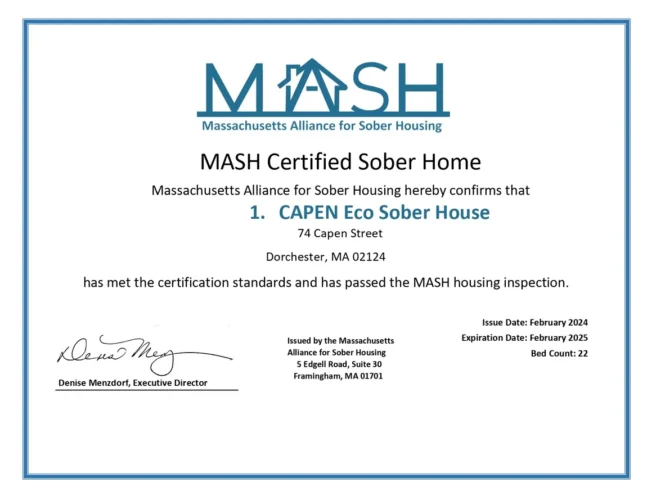There are even toys (like the Green Toys Fire Truck) that are packaged with sustainable materials. With this method, you won’t be adding new material to the pile until it’s done heating up and cooling down. Just how long How to make your home more environmentally friendly it takes to turn into compost depends on whether you choose the hot or cold method. “When the compost starts to look dark, resembling soil with no distinguishable remnants, you can pick it up and put it to your nose.
Featured Local Savings
- Adding plants and herbs helps bring the outdoors inside, which is especially important for homes without outdoor space.
- Do you set your thermostat to 75 degrees but still routinely wear sweaters?
- Climate tech company Sealed reports the average home loses up to 50 percent of its heat through the top of the house thanks to under-insulated or unsealed attics.
- Or opt for materials that work harder to protect the home, like cool roof shingles that reflect heat in especially sunny areas.
- The same goes for units with ceramic-glass surfaces, which use halogen elements as the heat source, making them the next best choice from an efficiency standpoint.
Other built-in cooling techniques include large porcelain tile on the floors, LED lighting, extra thick high-impact windows and doors to cut UV rays and sunblocking shades. We tend to use more sheets than necessary, and nine times out of 10, you probably didn’t need more than one. The excessive waste of paper towels is extremely bad for the environment. You can find a bundle of cleaning rags at your nearest Dollar Tree or save yourself some money, cut up any old shirts, and then turn them into rags. Every day, the importance of having a green, efficient home is becoming crystal clear. The weather is all over the place, sea levels are increasing at a drastic rate, according to the National Ocean Service, and climate change continues to worsen.
Climate Considerations
It’s so abundant that we are able to can and preserve a lot of it to use in the winter months, which cuts down on our grocery bills. Whether you create designated raised beds, a terraced vegetable garden like us, or simply stick to planter boxes and containers, you can have a productive garden wherever you are. Rainwater harvesting is another effective method for conserving water in the home. This method involves collecting and storing rainwater for later use. The collected water can then be used for irrigation, flushing toilets, washing clothes, and more (Check out our rainwater harvesting 101).
Start a Compost

So, sustainable living would be a lifestyle that you could maintain long-term without damaging the environment. A sustainable home refers to the physical shell of the house and its constriction. It can be built or retrofitted using human resources, building materials, energy and water efficiently. Harvesting rainwater can provide a long-term answer to gardening problems. Rainwater collection systems can range from simple rain barrel installations to more complex systems comprising cisterns for whole-house usage.
The Truth About Green Living & Sustainable Living – Our Journey So Far
- If you’re trading things out, be sure to offer them on Freecycle or Craigslist before kicking them to the curb.
- This is a great way to reduce your carbon footprint as it helps to sequester carbon dioxide from the atmosphere.
- Harvesting rainwater can provide a long-term answer to gardening problems.
- This not only allows you to make better use of this precious resource, but properly-harvested rainwater is also pure and chemical-free, and so better for your health.
All-electric homes can also be very eco-friendly, depending on where your energy comes from. A study by the Rocky Mountain Institute showed that not only are all-electric houses more economical than mixed-fuel homes, but they also have significantly fewer greenhouse gas emissions. We’ll look at different ideas, tips, and inspiration for designing a sustainable home. Traditional turfgrass lawns need lots of water, but xeriscapes can be a great sustainable alternative. “Xeriscaping is increasing in popularity and involves using native plants, turf, gravel or other materials to reduce or eliminate the usage of grass,” Raboine says. Look for cracks in the facade and gaps around windows and exterior penetrations (like pipes).
Sustainable Things To Do With Your Business’s Broken Pallets

This is because they don’t circulate moisture, thereby reducing the potential for damp or mould to form. Think about installing underfloor heating to limit your impact and improve your health. By planning thoughtfully, selecting sustainable materials, and adopting eco-friendly living practices, you can create a home that reflects your dedication to a greener, more sustainable planet. Your eco-friendly house will not only provide a healthy and energy-efficient living environment but also inspire others to make environmentally responsible choices.
- Plus, a right-sized (versus oversized) home saves on building materials and energy upfront.
- By making this small change, homeowners can improve indoor air quality and reduce their impact on the environment.
- Before buying any new items, take an inventory of your furnishings.
- They’re also noisy and can be a messy hassle as you have to run extension cords to power appliances within the home.
- Open your shades to let the natural sunlight in and switch off those lamps.
- Drinking tap water significantly reduces our plastic trash burden, but many people simply think bottled is better.
Incorporate recycled materials into your design
- Similarly, eco-friendly faucets and showerheads are more efficient in water usage.
- These “vampire loads” account for 5% to 10% of your home’s energy use, costing you about $100 a year.
- Cellulose is made up of around 85% recycled newspaper, making it the top environmentally friendly insulation alternative, whilst other green options include cotton or sheep’s wool.
- In fact, Paul Hawken, the author of Drawdown (and one of my personal heroes) lists ending food waste as one of the top 10 ways for us to help reverse global warming.
- They’re both renewable energy sources and incredibly useful when it comes to building your sustainable living dream house.
Planting a sustainable garden is one great way to improve sustainability. You won’t have to rely on produce sold in supermarkets, which is often shipped long distances. If you live in a cooler area like Canada, look for ways to make your garden all-seasons.
